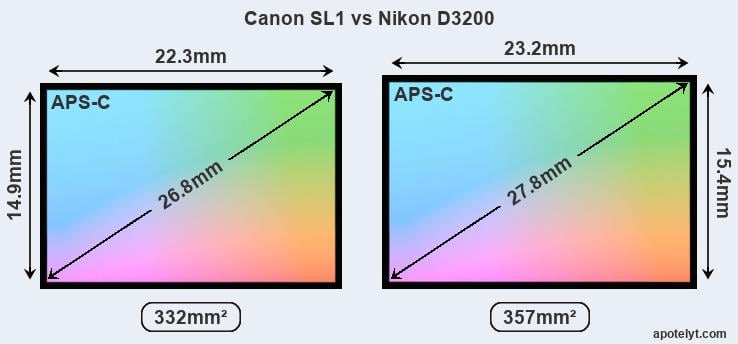
NIKON D3200 VS CANON SL1 ISO
It wasn't until we got to ISO 6400 and looked very closely at the shadow areas that we began to see noise as well as noticeable degradation in fine detail. Additionally, this camera did surprisingly well in handling noise and grain at higher ISO levels. The Canon Rebel SL1 uses an 18-megapixel APS-C sensor that's very similar to the one housed inside the Canon T4i & T5i, and produces excellent results for large prints at low ISO levels, all the way up to wall-mountable 30 x 40 inch prints at ISO 100 and 200. ISO 25,600 images were too mushy on fine detail and high ISO noise was very apparent, and therefore we would recommend avoiding this ISO level for use in prints. Colors still look okay, if a little on the dull side. ISO 12,800 images are fairly heavy on noise and lack fine detail at larger sizes, but can still produce a decent 4 x 6 inch print. ISO 6400 makes a decent 5 x 7, but noise and a reduction in fine detail starts to degrade image quality, preventing us from calling anything larger acceptable. As before, shadow noise is apparent, but otherwise the image looks great and fine details are still noticeable. ISO 3200 prints start to show a bit more noise in the shadows, and the SL1 starts to have noticeable issues with red colors (particularly in our red fabric area of our test scene), but it still produces a nice 8 x 10 inch print. Noise starts to appear a bit in the shadows if you look closely, but noise in the highlights and midrange areas are very low. At 16 x 20, the image is a bit too soft in finely detailed areas for us to make the call at that size. Colors also looked accurate and pleasing. ISO 1600 makes a good 13 x 19 inch print with a nice level of fine detail. 20 x 30 inch prints are suitable for wall display. There is a hint of noise, but you only really notice it in the shadow areas. ISO 800 images look good at 16 x 20 inches. ISO 400 allows for great prints up to 20 x 30 inches, while 24 x 36 inch prints are suitable for wall display. Despite the 18MP sensor, 30 x 40 inch prints would do fine for wall display. ISO 100 and 200 prints are nearly identical, with maybe just a tiny fraction more detail in ISO 100, but it's extremely hard to tell the difference. However, the detail is still impressive with excellent fine details and bright, accurate colors. You are pushing the resolution of the 18-megapixel sensor once you go past 20 x 30 inches, as you can see tiny pixilation on the edges if you look very closely. ISO 100/200 can produce great 24 x 36 prints if you look at them from a typical viewing distance, while a 20 x 30 inch print looks wonderful. The SL1 delivers good 24 x 36 inch prints at ISO 100/200 makes a good 16 x 20 inch print at ISO 800 and a usable 4 x 6 at ISO 12,800. The SL1, T5i and D3200 all look very similar at ISO 32. As the ISO increases, the Olympus E-PL5 really shoots ahead of the competition here, maintaining lots of fine detail.

The Sony however does appear to show some moiré artifacts in the fine lines of the lettering. In terms of detail alone, the two Canons, the Nikon D3200 and the Sony all look fairly similar. The SL1 and T5i images at ISO 100 look virtually identical. At base ISO, the Olympus and Pentax easily come out on top, with clean, crisp fine detail. Canon T5i, Nikon D3200, Olympus E-PL5, Pentax K-30 and Sony NEX-6ĭetail comparison. The NEX-6 also shows a more noticeable leaf pattern in the red fabric compared to the SL1.ĭetail: Canon SL1 vs. Like we saw in the previous comparison, the Sony packs a punch compared to the Canon with less shadow noise and a bit more detail in the mosaic crop.


 0 kommentar(er)
0 kommentar(er)
